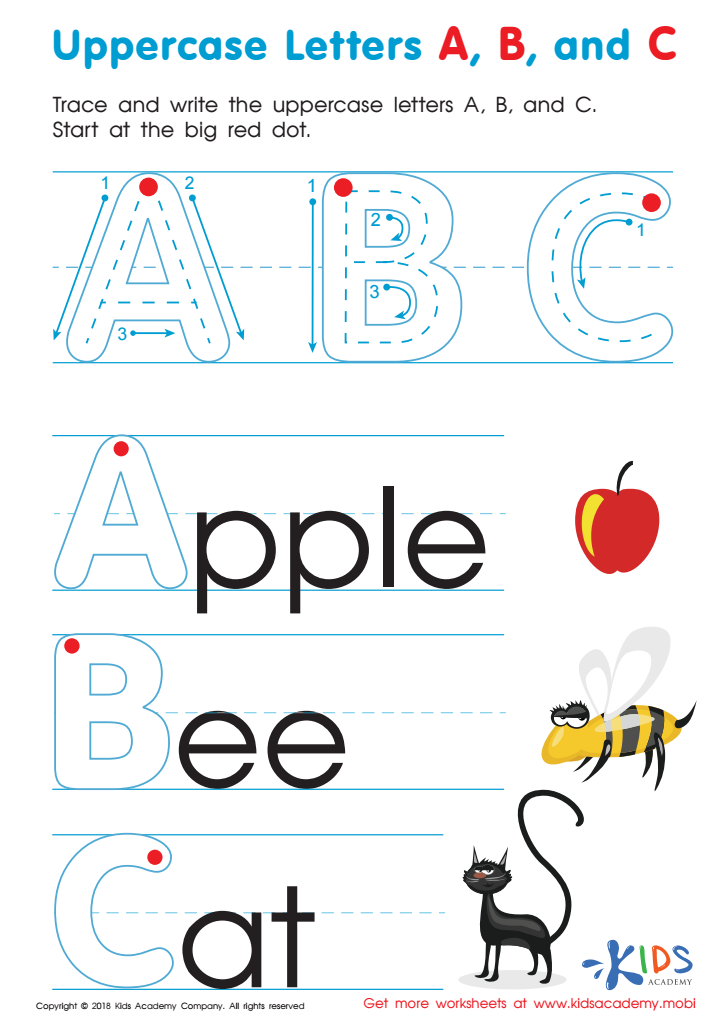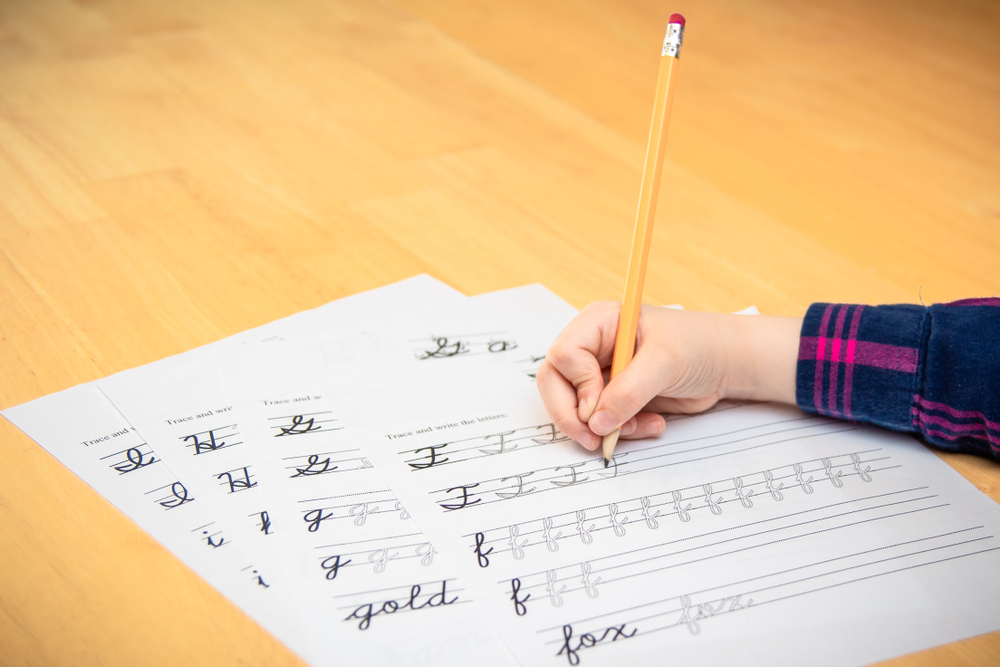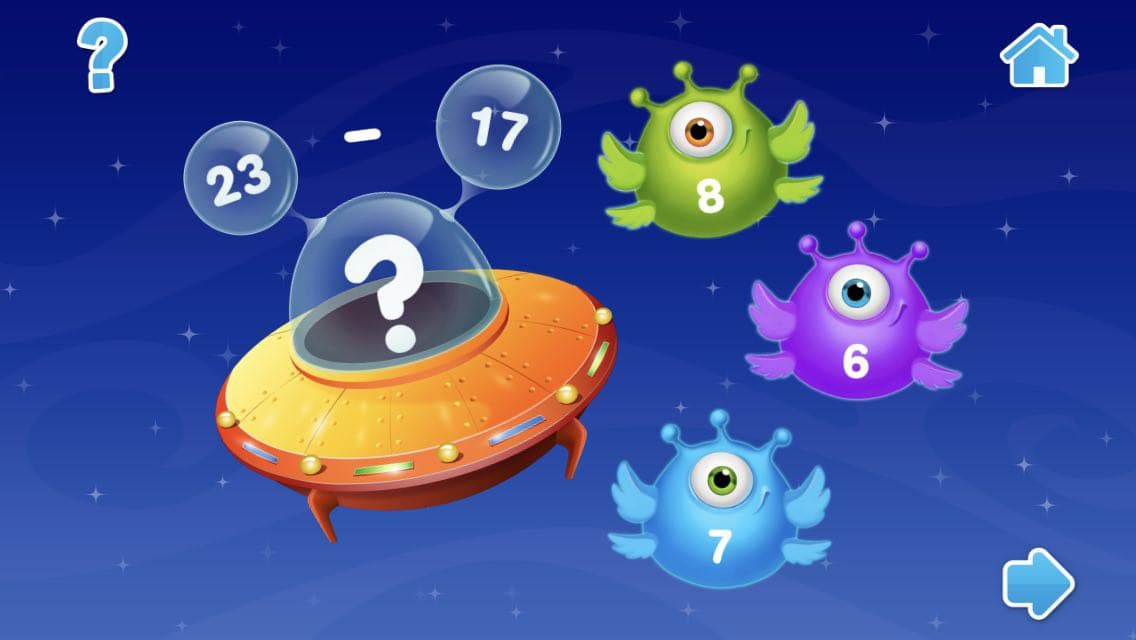Alphabet Recognition Normal Uppercase Letters Worksheets for Ages 4-9
10 filtered results
-
From - To
Boost your child's alphabet mastery with our "Alphabet Recognition Normal Uppercase Letters Worksheets" designed for ages 4-9. These engaging printables from Kids Academy focus on recognizing uppercase letters, enhancing early reading skills, and increasing literacy confidence. Each worksheet features enjoyable activities like tracing, coloring, and matching, making learning fun and interactive. Perfect for preschoolers and elementary students, our resources are crafted by education experts to support cognitive development and foster a love for learning. Start your child's literacy journey today with Kids Academy's expert-crafted alphabet recognition worksheets!


Uppercase Letters A, B, and C Worksheet


Uppercase Letters J, K, and L Worksheet


Uppercase Letters M, N, and O Worksheet


Uppercase Letters G, H, and I Worksheet


Find Uppercase Letters P, Q, and R Worksheet


Uppercase Letters P, Q, and R Worksheet


Identifying Uppercase Letters Worksheet


Uppercase Letters D, E, and F Worksheet


Uppercase Letters Y Z Worksheet


Uppercase Letters V, W, and X Worksheet
Alphabet recognition, especially of normal uppercase letters, forms the foundation of early literacy development for children aged 4-9. This early skill is crucial because it directly impacts a child’s ability to read and write, which are essential for their academic success and future learning.
Firstly, understanding uppercase letters aids in the development of phonemic awareness. Children who can easily recognize and name letters are more likely to understand that letters represent sounds. This fundamental understanding helps in blending sounds to form words and enhances decoding skills during reading.
Secondly, alphabet recognition supports vocabulary growth. As children recognize letters, they can start identifying words around them, which helps them learn new words and meanings. This expands their vocabulary and builds confidence in using language expressively.
Moreover, knowing uppercase letters helps with handwriting skills. Children begin writing by forming letters, and knowing the shapes and names of uppercase letters is often easier for young learners due to their simpler, more angular shapes compared to lowercase letters.
Lastly, being proficient in alphabet recognition is linked with enhanced cognitive development, improving memory, attention, and analytic skills.
Parents and teachers should prioritize alphabet recognition to set a strong educational foundation, leading to better literacy outcomes and a lifelong love for learning.
 Assign to My Students
Assign to My Students















